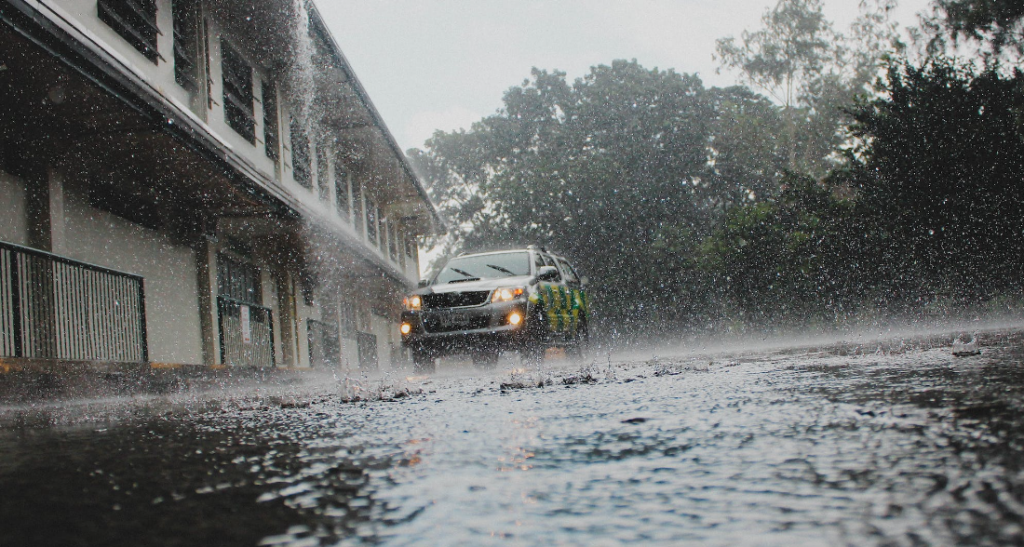While many products promise to offer your car’s paint the ultimate protection, ceramic coating and wax remain the popular choices. However, making a choice between the two can often be a conundrum.
In this guide, we dissect each option, breaking down their composition, durability, water repellency, ease of application, and cost implications to help you make a well-informed choice.
Understanding Ceramic Coating
Ceramic coating, a liquid polymer, bonds with the vehicle’s paint and provides a layer of protection that can last for several years. This clear coat utilizes nanotechnology, with particles that form a very fine, thin layer completely invisible to the eye. Due to its chemical properties, ceramic coatings can provide a level of protection that is far beyond what traditional waxes can offer.

Durability (several years)
One of the standout features of ceramic coating is its durability. When properly maintained, it can last for several years, protecting your vehicle from UV rays, scratches, chemical etchings, and bird droppings. It’s a long-term investment in maintaining the car’s appearance.
Water Repellency
Ceramic coatings excel in providing excellent water repellency. The hydrophobic nature of the coating makes it difficult for water molecules to bond with the car’s surface, ensuring that water beads up and rolls off, taking dirt and grime with it.
Ease of Application
Applying a ceramic coating requires a significant amount of preparation and skill, often necessitating professional assistance. The vehicle’s surface needs to be meticulously cleaned and prepared to ensure the coating bonds correctly with the paint.
Cost Implication
Due to its longevity and the complexity of the application process, ceramic coatings can be quite costly. However, considering the level of protection and the reduced need for maintenance, many find it to be a worthwhile investment.
Average cost: $50 to $200 (per bottle) and $200 to $1000 (for product and professional application)
Understanding Car Wax

Car wax has been a go-to paint protection solution for many years, offering a level of shine and protection that is both affordable and easy to apply. Typically composed of natural substances like carnauba, combined with beeswax or synthetic polymers, it forms a protective layer on the car’s surface, shielding it from environmental factors.
Durability (3-4 months)
While wax offers good protection, its durability is limited compared to ceramic coatings. It needs to be reapplied regularly, generally every three to four months, to maintain its protective qualities.
Water Repellency
Wax provides decent water repellency, causing water to bead up on the surface. However, its hydrophobic properties are not as strong as a ceramic coating, necessitating more frequent applications to maintain its effectiveness.
Ease of Application
Wax is considerably easier to apply than ceramic coatings. It can be a simple DIY project that doesn’t require special skills or tools, making it a popular choice for casual car enthusiasts.
Cost Implication
Car wax is a more budget-friendly option compared to ceramic coatings. Its lower cost, combined with the ease of application, makes it a preferred choice for many car owners, especially those looking for a cost-effective yet functional solution.
Average cost: $5 to $100 including the product and application (if done professionally) depending on the type and brand of wax.
Ceramic Coating vs Car Wax
Comparative Analysis of Ceramic Coating and Wax
| Aspect | Ceramic Coating | Car Wax |
| Durability | Several Years | 1-4 Months |
| Water Repellency | High | Moderate |
| Ease of Application | DIY/Professional | DIY |
| Cost | Moderate-High | Cheap-Moderate |
Making the Right Choice
Considering Your Lifestyle
Choosing between ceramic coating and wax comes down to considering your lifestyle, the environment where you live, and your budget. If you are looking for a long-term solution and are prepared to invest upfront, a ceramic coating might be the way to go.
On the other hand, if you enjoy the regular upkeep of your vehicle and are looking for a budget-friendly option, wax is a reliable choice.
Considering the Environmental Factors

Australia’s varying climate necessitates different approaches to car care. If your vehicle is often exposed to harsh environmental conditions, a more durable protection like ceramic coating might be warranted.
Considering the Budget
While ceramic coating is an investment, it offers long-term protection that can ultimately save you money in the long run. Wax, though less expensive, requires regular reapplications, which can add up over time.
Conclusion
Choosing between ceramic coating and wax is a significant decision that can influence the longevity and aesthetics of your car. By considering your lifestyle, the environmental factors, and your budget, you can make an informed choice that best suits your needs and ensures the splendour of your car remains intact for years to come.
Frequently Asked Questions (FAQs)
A properly maintained ceramic coating can last several years, providing superior protection against environmental factors.
No, once you have a ceramic coating, waxing is not necessary as the coating provides a superior level of protection and shine.
While there are DIY ceramic coating kits available, it’s generally recommended to have it applied by a professional to ensure the best results.
It’s recommended to wax your car every three to four months to maintain its protective qualities and shine.
Considering its longevity and the level of protection it offers, many car owners find ceramic coating to be a worthy investment.
Yes, you can switch from wax to ceramic coating. However, it will require a thorough preparation of the car’s surface to remove any wax residue before the application of the coating.
-

Aaron is a passionate car detailing enthusiast who channels his expertise and love for pristine vehicles into engaging blog content for a leading detail store website. With a keen eye for detail and a wealth of knowledge about the latest products and techniques, Aaron provides invaluable insights and tips to fellow car enthusiasts. His dedication to achieving showroom-quality results and his ability to explain complex processes in an easy-to-understand manner make his blog a go-to resource for anyone looking to elevate their car detailing game.
-

Calvin brings a wealth of experience across multiple engineering disciplines, including chemical, mechanical, and electrical engineering. His in-depth knowledge of filtration systems and hydraulic pumps has positioned him as an expert in the pressure washer product category. With a unique combination of technical expertise and business insight, Calvin excels at solving complex challenges and driving innovation, particularly in the car detailing industry.

